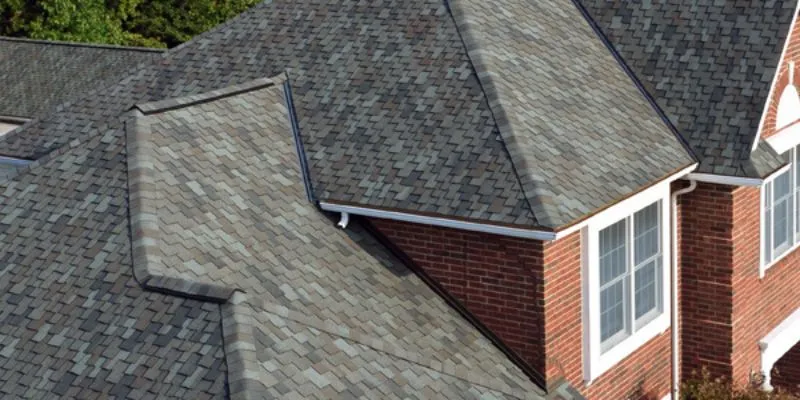When it comes to your home, the roof is one of the most critical components, protecting you from the elements and contributing to the overall aesthetics and value of your property. Understanding the various parts that make up your roof can help you maintain it better and make informed decisions regarding repairs or replacements. Here’s a simple guide to the essential components of a typical roof.
The Structure of Your Roof
Decking
Decking forms the base layer of your roof, sitting atop your home’s structural supports. It is typically made from plywood or oriented strand board (OSB) and serves as the foundation for other roofing materials.
Underlayment
The underlayment is a waterproof barrier that protects the decking from water infiltration, which can cause rot and deterioration. It is usually made of felt or synthetic materials.
Shingles or Tiles
Shingles or tiles are the outermost layer of the roof. They provide the primary barrier against the weather and are available in various materials, including asphalt, slate, and clay.
Flashing
Flashing consists of thin pieces of metal installed at roof transitions, around chimneys, and other protrusions to prevent water from seeping into the roof structure.
Gutters and Downspouts
These components catch and channel rainwater away from your home, protecting the foundation and landscaping.
Ridge and Hip Shingles
Ridge and hip shingles are specially designed to cover the roof’s peaks and corners, providing extra protection against water ingress. They are often thicker and more durable than regular shingles to withstand wear and tear at these high-stress areas.
Soffit and Fascia
- Soffit: The soffit is the exposed surface beneath the overhanging section of a roof eave. It helps ventilate the attic, drawing heat and moisture away, which can degrade roof materials over time.
- Fascia: This is a vertical finishing edge connected to the ends of the rafters, trusses, or the area where the gutter is attached to the roof. The fascia is visible from the outside and often holds the gutters in place.
Ventilation
Proper roof ventilation is crucial to prevent the buildup of heat and moisture in the attic, which can lead to rot, mold, and reduced insulation effectiveness. Ventilation systems often include:
- Ridge Vents: Installed along the roof’s ridge, they allow warm, humid air to escape from the attic.
- Soffit Vents: Located under the roof eaves, these work with ridge vents to provide a continuous airflow across the attic.
Ice and Water Shield
In colder climates, an ice and water shield is a critical component. It’s a waterproof membrane installed under the shingles to protect against ice dams and wind-driven rain. This shield is crucial in preventing water from seeping into the home through the roof.
Drip Edge
The drip edge is a metal installed at the edges of the roof to help water drip away from the fascia and into the gutters. This helps protect the underlying roofing components and the sides of the house from water damage.
Table: Key Roof Components and Their Functions
| Component | Material Options | Primary Function |
| Decking | Plywood, OSB | Supports all roof materials |
| Underlayment | Felt, synthetic | Waterproofs the roof |
| Shingles/Tiles | Asphalt, slate, clay | Protects against the weather |
| Flashing | Metal | Prevents water infiltration |
| Gutters | Aluminum, copper, vinyl | Manages water drainage |
Common Roofing Issues
Awareness of common roofing issues can help you address problems early and avoid extensive damage:
- Leaks: Usually occur at damaged shingles or inadequate flashing areas.
- Weather Damage: High winds, hail, and other elements can harm roof materials.
- Age: Over time, materials deteriorate, necessitating repairs or replacement.
Maintenance Tips
To extend the life of your roof, consider these simple maintenance tips:
- Regular Inspections: Check for damage or wear after severe weather.
- Clean Gutters: Prevent water backup that can damage the roof.
- Trim Overhanging Branches: Reduce the risk of physical damage to your roof.
Importance of Professional Installation
While knowing these components is helpful, professional installation and regular inspections by qualified roofers are crucial to ensure all parts function correctly and efficiently. Proper installation affects the roof’s longevity, effectiveness, and safety.
By understanding these roof components, homeowners can better appreciate the complexity of their roofing system and the importance of each part in keeping their home safe from the elements. Regular checks and maintenance, especially after extreme weather events, can help address potential issues before they become significant problems.
Why Choose Hasid On The Roof Florida?
At Hasid On The Roof Florida, we are experts in roof installation, maintenance, and repair. Our team in Miami, FL, uses only the best materials and the latest techniques to ensure your roof is in top condition. Trust us to provide professional and friendly service tailored to your needs. Contact us today to learn how we can help you protect one of your most significant investments—your home.

